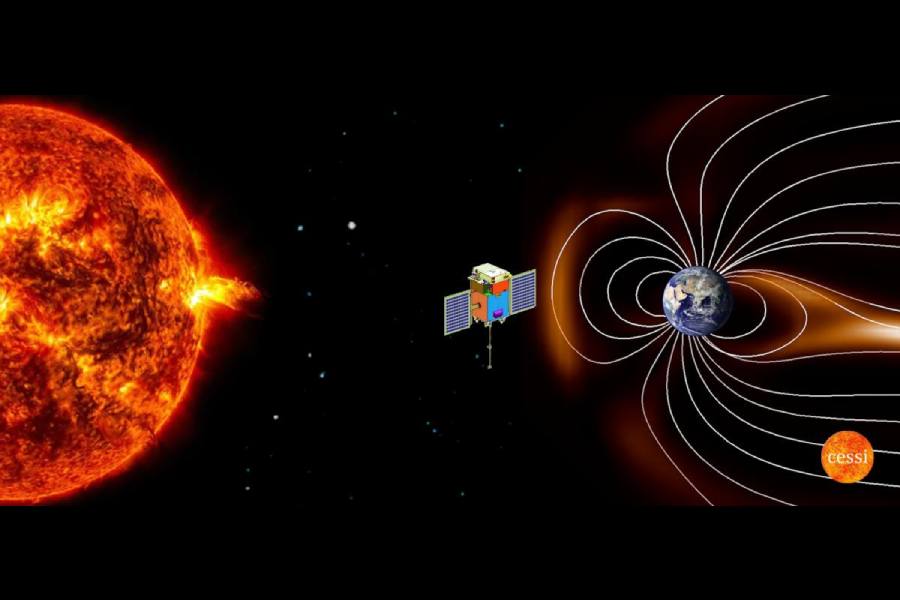Advanced sensors of a payload on board India's maiden solar mission Aditya-L1 have successfully detected the impact of coronal mass ejections (CMEs), according to ISRO.
The payload -- Plasma Analyser Package for Aditya (PAPA) -- is an energy and mass analyser designed for in-situ measurements of solar wind electrons and ions in the low energy range, the space agency noted.
It has two sensors: the Solar Wind Electron Energy Probe (SWEEP, measuring electrons in the energy range of 10 eV to 3 keV) and the Solar Wind Ion Composition Analyser (SWICAR, measuring ions in the energy range of 10 eV to 25 keV and mass range of 1-60 amu).
The sensors are also equipped to measure the direction of arrival of solar wind particles.
The data collected by PAPA, developed by the Space Physics Laboratory and Avionics Entity of the Vikram Sarabhai Space Centre, revealed the occurrence of CME events, notably on December 15, 2023, and during February 10-11, 2024.
"The CME on December 15, 2023, was a single event. PAPA observations during this period showed an abrupt increase in total electron and ion counts and the time variations align with the solar wind parameters and magnetic field measurements obtained from the Deep Space Climate Observatory and Advanced Composition Explorer satellites at the L1 point,", an ISRO statement said.
In contrast, the observed variations in electron and ion counts during February 10-11, 2024, are the result of multiple minor events, with differences in the time variations of electrons and ions, it was noted.
The SWEEP and SWICAR sensors on PAPA-Aditya-L1, ISRO said, are currently making continuous observations of solar wind electrons and ions in the default mode, demonstrating that they are performing as per the design in all modes of operations.
The observations made by PAPA emphasise its effectiveness in monitoring space weather conditions and its capability to detect and analyse solar phenomena, it said.
The launch of Aditya-L1 by PSLV-C57 rocket was successfully accomplished by ISRO on September 2.
Aditya-L1 spacecraft carried seven payloads to study the Sun -- four to observe the light from the Sun and the remaining three to measure insitu parameters of the plasma and magnetic fields.
Aditya-L1 was placed in a halo orbit around the Lagrangian Point 1 (L1), which is 1.5 million km from the Earth in the direction of the Sun. It revolves around the Sun with the same relative position and hence can see the Sun continuously, ISRO officials said.
Except for the headline, this story has not been edited by The Telegraph Online staff and has been published from a syndicated feed.











